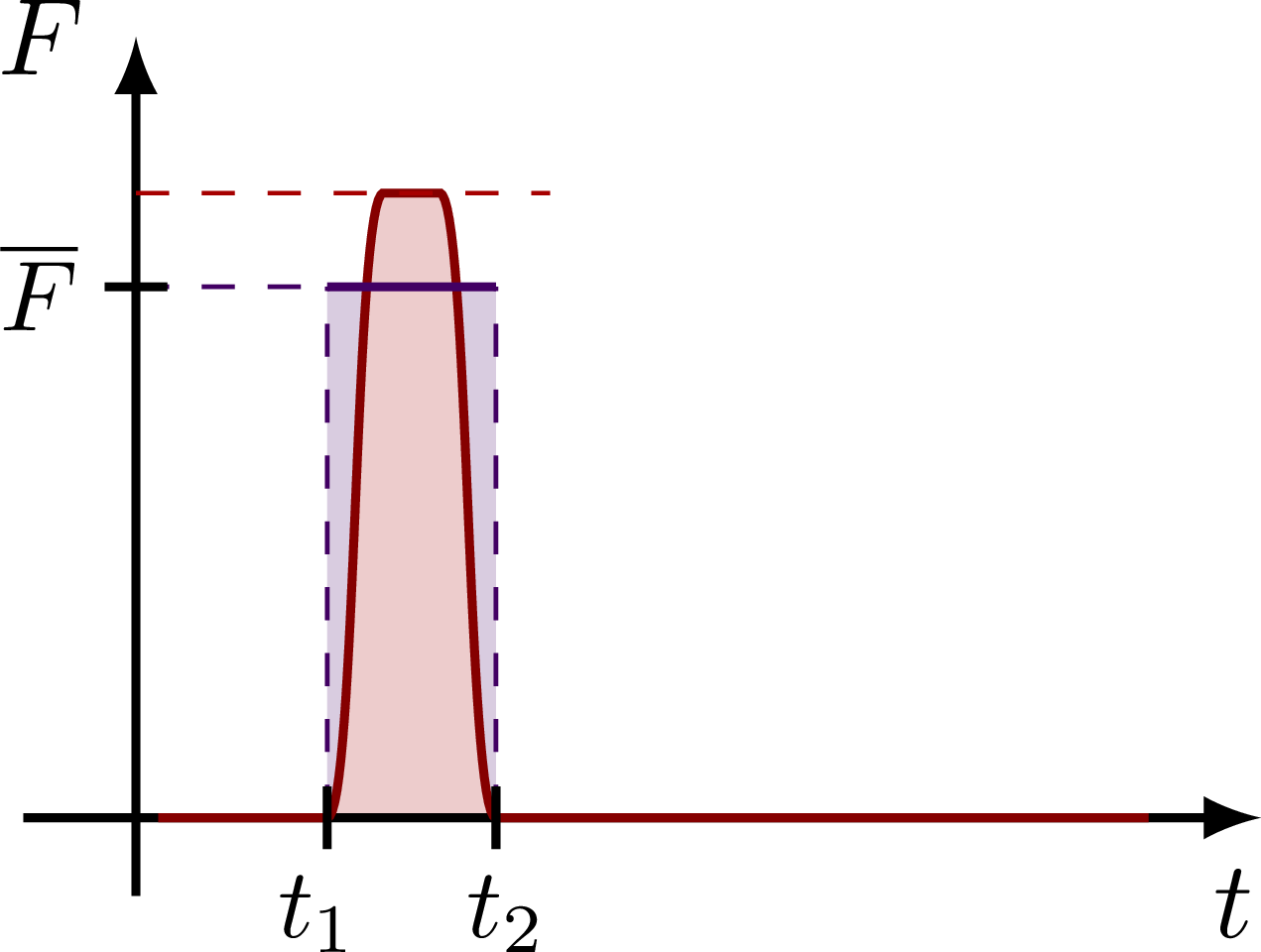Impact, impulse, average force over time
Edit and compile if you like:
% Author: Izaak Neutelings (October 2020)\documentclass[border=3pt,tikz]{standalone}\usepackage{physics}\usepackage{tikz}\tikzset{>=latex} % for LaTeX arrow head\colorlet{xcol}{blue!70!black}\colorlet{myred}{red!65!black}\colorlet{mypurple}{blue!60!red!65!black}\def\tick#1#2{\draw[thick] (#1) ++ (#2:0.1) --++ (#2-180:0.2)}\begin{document}% IMPULSE\def\xmax{3.6}\def\ymax{2.5}\begin{tikzpicture}\def\Fmax{0.8*\ymax}\def\Fave{0.4*\ymax}\def\ta{0.12*\xmax}\def\tb{0.43*\xmax}\def\tc{0.82*\xmax}\def\impulse{(0.02*\xmax,0) -- (\ta,0) to[out=0,in=180,looseness=0.7] (\tb,\Fmax)to[out=0,in=180,looseness=0.7] (\tc,0) -- (0.9*\xmax,0);}\fill[mypurple!20] (\ta,0) rectangle (\tc,\Fave);\fill[myred!20] \impulse;\draw[->,thick] (-0.1*\xmax,0) -- (\xmax,0) node[right=4,below left=1] {$t$};\draw[->,thick] (0,-0.1*\ymax) -- (0,\ymax) node[left=1] {$F$};\draw[thick,myred!80!black] \impulse;\draw[dashed,mypurple](\ta,0) --++ (0,\Fave) (\tc,0) --++ (0,\Fave) (0,\Fave) --++ (\ta,0);\draw[dashed,myred](0,\Fmax) --++ (1.15*\tb,0);\draw[thick,mypurple] (\ta,\Fave) -- (\tc,\Fave);\tick{\ta,0}{90} node[scale=0.9,below=-1] {$t_1$};\tick{\tc,0}{90} node[scale=0.9,below=-1] {$t_2$};\tick{0,\Fave}{0} node[scale=0.9,left=-1] {$\overline{F}$};\tick{0,\Fmax}{0} node[scale=0.9,left=-1] {$F_\text{max}$};
Click to download: dynamics_impulse.tex • dynamics_impulse.pdf
Open in Overleaf: dynamics_impulse.tex





